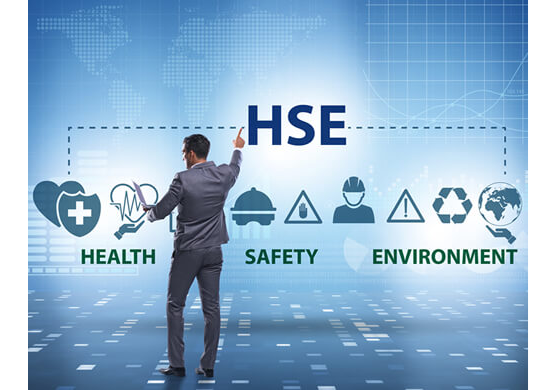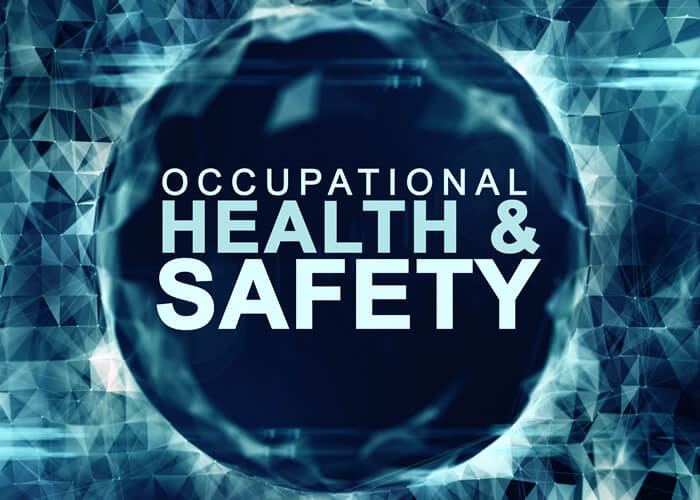Improve Occupational Health & Safety through deploying Workplace Technology
Occupational Health & Safety – A Brief History
So, what led to the development of Occupational Health & Safety, or OH&S? Unsurprisingly, the foundations of it were sown back in the industrial revolution, which saw agricultural workers migrate to cities, attracted by the allure of steady employment in new mills and factories (source). However, the huge numbers of people looking for work simply played into the hands of the factory owners and in doing so satisfied their demand for cheap labour. This led to poor pay coupled with extremely hazardous conditions, particularly for those operating factory machinery.
These factors also generated a significant increase in child labour and as a result of a complete lack of any Occupational Health & Safety, it also meant that many children developed occupational diseases and died before reaching their mid-20s (source). A public outcry over working conditions, and to the levels of child labour, led to the introduction of the Health and Morals of Apprentices Act 1802, by factory owner Sir Robert Peel, which became commonly referred to as the Factory Act.
However, poor working practices continued for over 100 years after this date, primarily driven by a lack of technology and poor scientific understanding. It remained common place for workers to lose their lives at work and this risk was simply viewed as part of the job. For example, in shipyards there was an unwritten expectation of ‘one death for every £100,000 spent’ (source). Ironically, at a build cost of £1.5M and 8 deaths during construction, the Titanic’s toll was less than the 15 deaths that might have been expected. This somehow made the Harland and Wolff shipyard a relatively safe place to work. So much for Occupational Health & Safety back in the early 1900’s, and that’s before we get to the customer experience of those unfortunate enough to sail on Titanic’s maiden voyage.
Moving into the 1930’s and 1940’s we have the radium experience, predominantly driven by its magical luminous characteristics. This led the U.S. Radium Corporation to employ more than a hundred workers to paint watch and clock faces with their patented, un-dark luminous paint (source). However, many of the women employed to do this would lick the tip of the brushes, so that it gave them a precise point to work with (source). This produced two phenomena, firstly their teeth and nails glowed in the dark (source) as a result of contact with the radium based paint, secondly direct contact and exposure to radium, a high radioactive material, led to many of them dying from radium poisoning (source).
As per the Titanic example above, not only was radium horrific from an Occupational Health & Safety perspective, but what about customer experience? Those that bought these products were exposing themselves to radiation. Companies were therefore essentially killing their customers along with their workforce, not a particularly sustainable business model. How had this come about? A lack of scientific knowledge, particularly following the use of radium to treat cancer, along with its glow-in-the-dark novelty, led to it being viewed as having magical healing properties. Radium was even included within foods products, including chocolate, up until 1936 (source).
Thankfully, in recent times Occupational Health & Safety has significantly improved. An Act of Parliament saw this enshrined in legislation through the Health and Safety at Work Act 1974, which since 2011 has become to define the fundamental structure and authority for the encouragement, regulation and enforcement of workplace health, safety and welfare within the United Kingdom. But, can we improve in this key area and if so, what is the business case for doing so?
Occupational Health & Safety – Is OH&S good business sense?
Let’s take a quick look at AppDynamics, which was founded in 2008 and acquired by Cisco in 2017 for $3.7 billion. They had rather a simplistic go-to-market strategy for selling their performance management and IT operations analytics software, which was based upon what they referred to as the 3Rs (source):
- Recruiting
- Retention
- Revenue
They focused upon recruiting the right people and in the words of their former VP of Sales:
‘Once you have these mythical A-players, you had better keep hold of them. Attrition will kill your hyper growth as sure as anything else. If through poor recruiting and/or poor retention you are constantly backfilling existing heads, you can never scale your business.’
Although from a radically different sector, let’s compare and contrast the above to retail to see if there are any parallels. For example, consider the operational difficulties and inefficiencies that may result from a lack of in-store personnel, whether through retention or absence. For example, the ability to maintain correct levels of on-shelf stock, a key driver of revenue, may rapidly become depleted due to the lack of hands on deck. This resonates with the issues raised by AppDynamics, namely the positive correlation between human capital and the ability to gather revenue, which facilitates growth.
Occupational Health & Safety – A new Era for OH&S driven by AI and IoT
So, what is a key driver of work related absence for retailers? One is slips, trips and falls and here are some stark facts:
- Slips, trips and falls are the second highest single cause of workplace injuries (source)
- 71% of slips, trips and falls are avoidable (source)
- Almost 50% of claims made against retailers are for slip, trip and fall cases (source)
- Cost to businesses >$10bn (source)
The above also raises some important questions for those active within:
- Is it the corporate social responsibility of organisations to improve occupational health & safety for their work force?
- Can raising occupational health & safety performance also generate improvements in customer experience?
- Will making these improvements also drive down costs?
Companies are now under increasing corporate social responsibility to provide safer environments for both their customers and workforce. New technologies now make this possible, in particular Artificial Intelligence (AI) and the Internet-of Things (IoT). They also offer businesses new opportunities to go one step further and to make significant improvements within critical operational areas.
Consider using AI combined with IoT to facilitate the efficient removal of slip, trip and fall hazards in shopping aisles. Not only will this improve occupational health & safety for on-floor staff, it will also remove the same hazard for customers, which improves their overall shipping experience. This is now possible through SpillDetect, a brand new product that uses AI to automatically detect clear liquids (water) and other liquid spills such as milk, juice, condiments, and so on over existing CCTV networks.
Through taking pre-emptive action, this state-of-the-art technology also helps retailers to reduce overall liability and drive down related costs. For example, through providing a full audit trail of the spill and clean-up event as standard, SpillDetect delivers a raft of KPIs for analysis and benchmarking of performance from store-to-store and region-to-region. Reporting metrics allow businesses to understand where and how improvements can be made to both customer experience and occupational health & safety, from a product that delivers an ROI in less than 3 months.
Large US retailers are already embarking upon this path, embracing new technology in their mission to become the safest place to work and shop. They also recognise the instant value that respective technological advances offer, as they provide differentiation; a source of competitive advantage that delivers long term sustainability. Contact us now, if you want to discuss how our patent pending AI technology may help to improve your occupational health and safety.






